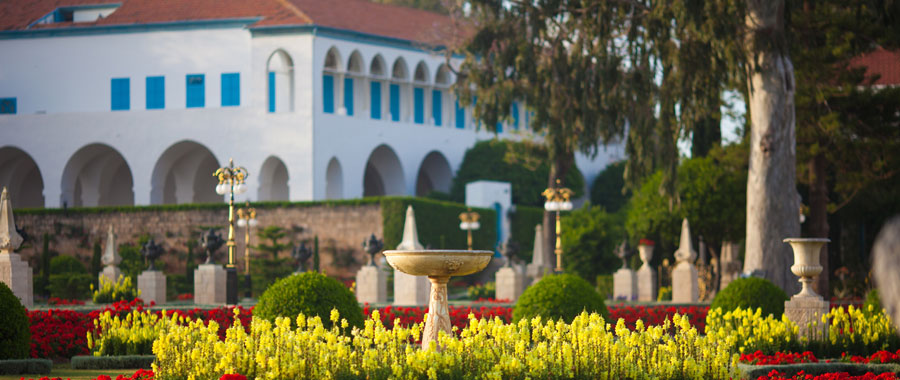Visiting the holiest site in the Bahá’í Faith—the Shrine of Bahá’u’lláh—invites not only physical pilgrimage but also a profound spiritual journey. The very essence of this revered location encapsulates a tapestry of history, spirituality, and the principles that govern the Bahá’í teachings. This article explores the significance of visiting this sacred place, the emotions it evokes, and the deeper philosophical underpinnings that fascinate countless pilgrims.
The Shrine of Bahá’u’lláh, situated in Bahjí, Israel, serves as the final resting place of Bahá’u’lláh, the founder of the Bahá’í Faith. It is an edifice of exquisite beauty and architectural grandeur, emblematic of the ideals of unity and diversity that Bahá’u’lláh espoused. The very act of visiting this sanctuary transcends mere tourism; it is an invitation to engage with the underlying doctrines and principles of the Bahá’í philosophy, including the oneness of humanity, the investigation of truth, and the harmony of science and religion.
What draws individuals to this sacred spot? One may initially observe the stunning aesthetics of the Shrine itself: the intricately designed structure, set against the backdrop of terraced gardens and the Mediterranean Sea, offers a visual feast that captivates the senses. However, an examination of this attraction reveals multilayered motivations. Visitors often report feelings of tranquility, awe, and deep introspection while in the vicinity, which can be attributed to the vibrant spiritual energy of the site.
The gardens surrounding the Shrine, often described as a ‘paradise on earth,’ serve as a prelude to the spiritual experience awaiting pilgrims inside the Shrine. Herein lies a vital observation: physical beauty and spiritual enlightenment are intertwined within Bahá’í teachings. A walk through these meticulously maintained gardens allows for contemplation and reflection, engendering a deeper connection to Bahá’u’lláh’s teachings. The serene environment fosters introspection, allowing visitors to ponder their personal beliefs and the universality of Bahá’í principles.
As pilgrims ascend toward the Shrine, they partake in an age-old tradition emblematic of civilizational values—approaching the divine with reverence and humility. Each step brings them closer not only to the Shrine but also to the essence of Bahá’u’lláh’s message: the need for unity among disparate peoples and cultures. This pilgrimage ultimately becomes an exercise in personal and collective responsibility, reflecting a core tenet of Bahá’í belief—service to humanity is service to God.
Moreover, visiting the Shrine serves as a reminder of the historical context surrounding Bahá’u’lláh’s life and the trials he endured. His imprisonment and subsequent exile symbolize resilience and the unwavering pursuit of truth against insurmountable odds. Each visitor is encouraged to delve into this historical narrative to gain a profound understanding of the struggles faced by early Bahá’ís and the eventual triumph of their faith. Connecting with such stories during a visit elevates the experience from mere observation to one of veneration and respect.
Interestingly, stories abound of how pilgrims, after visiting the Shrine, emerge transformed. Many recount experiencing a profound sense of purpose and renewal, an emotional catharsis derived from connecting with a legacy that transcends time and geography. This phenomenon prompts one to contemplate the power of spiritual spaces: how they can invoke change, fostering a renewed commitment to the teachings of Bahá’u’lláh. This is where the surface allure of the Shrine converges with the deeper, transformative impact it can have on individuals.
Additionally, the pilgrimage provides an opportunity to engage with fellow believers from diverse backgrounds, further emphasizing the Bahá’í principle of unity. Discussions and shared experiences during such visits often illuminate contemporary issues where Bahá’í teachings can play a role in furthering harmony and understanding. Visitors leave not only with personal anecdotes but also with a collective sense of affiliation grounded in shared values—a manifestation of the oneness of humanity that Bahá’u’lláh advocated.
In essence, visiting the Holiest Spot in the Bahá’í World is a multifaceted experience. It merges architecture, history, spirituality, and community, resulting in a rich tapestry that captivates all who tread its grounds. This sacred site propels visitors into a deeper understanding of Bahá’í teachings, inviting them to explore not only the faith itself but also their individual spiritual journeys.
Consequently, one may consider the implications of such experiences in one’s life beyond the pilgrimage. The lessons gleaned from this sacred visit can serve as guiding principles, fostering greater compassion, understanding, and engagement within one’s community. This cyclical nature of pilgrimage—whereby visiting informs personal and collective growth—underscores the true essence of Bahá’í teachings: that in seeking to understand others, we come to a more profound understanding of ourselves and our place within the intricate tapestry of humanity.
Ultimately, the act of visiting the Shrine of Bahá’u’lláh is not merely a physical undertaking; it embodies a global mission of peace, unity, and the celebration of diversity. Thus, one might conclude that every pilgrimage is a step towards realizing the dream Bahá’u’lláh envisioned—a world where all people coexist in harmony, understanding, and love.
